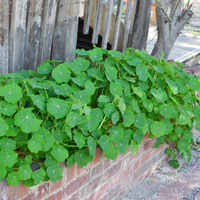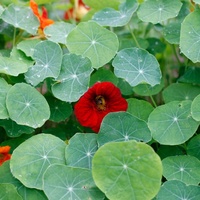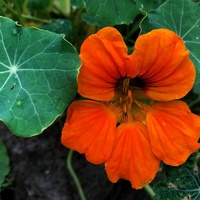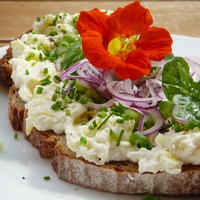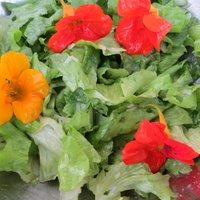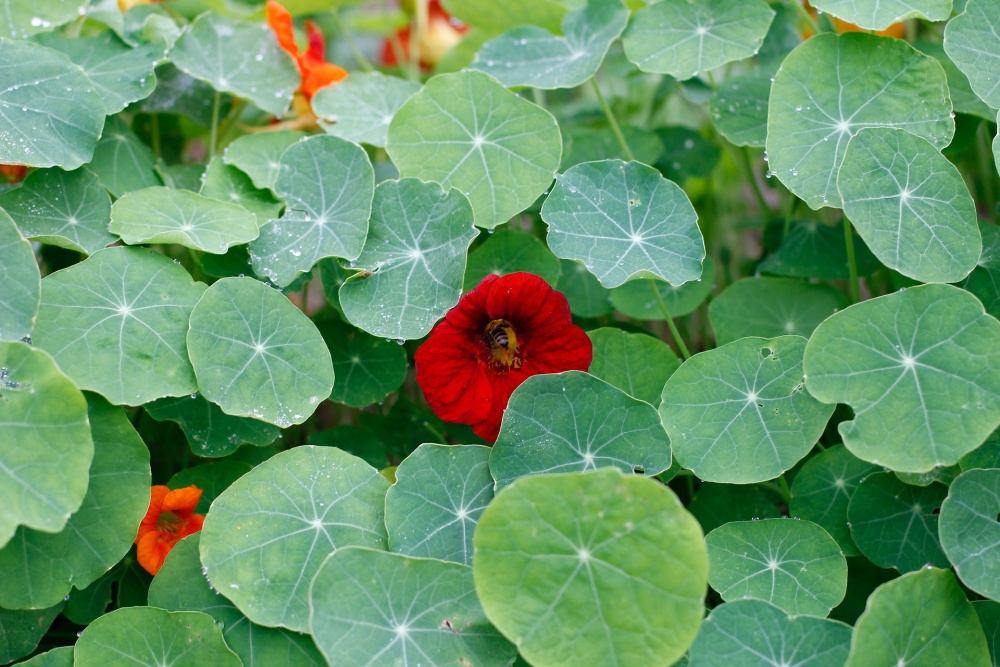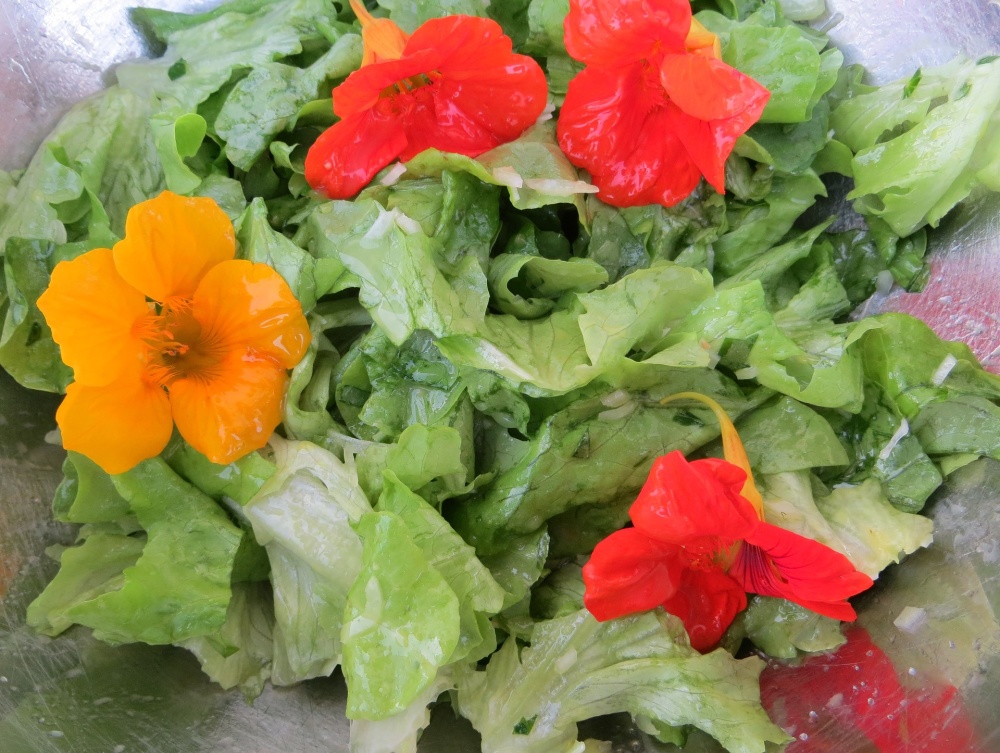Common name: Nasturtium
Other common names: Indian cress, Garden nasturtium, Climbing nasturtium
Description
Nasturtium is a flowering herb originating in highland areas of South America, its natural range extending along the Andes mountains from Colombia to Bolivia.
The stems are soft, succulent and grow quickly with a trailing habit, branching and spreading out along the ground, cascading over walls and climbing up on structures such as fences, to heights of up to 2 m (6.6 ft). In warm climates, without frost or extreme heat and with adequate moisture, it is a self-propagating perennial, putting down roots and re-seeding as it grows.
Leaves are medium-green, disc-shaped with wavy margins and from 5 to 15 cm (2 to 6 in) in diameter. They are held above the ground on long, erect leaf stalks and close together with the edges overlapping, shading the ground beneath them.
Nasturtium blooms throughout the year, producing solitary, trumpet-shaped flowers on erect stalks in shades of yellow, orange or red, contrasting strongly with the green of the leaves. Fertilised flowers develop into roundish, green, pea-sized fruit divided into three spongy segments, each enclosing a single seed.
In the tropics, the leaves and flowers are most abundant during the year's cooler months.
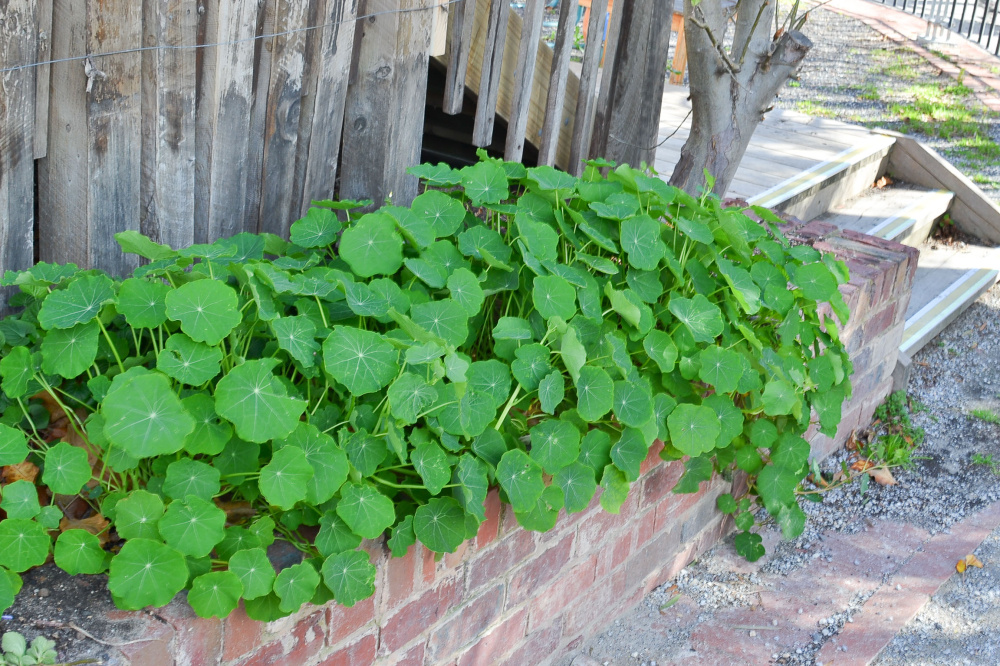
Use
Nasturtium is a widely cultivated herb in gardens for its ability to cover ground quickly, suppress weeds and conserve soil moisture. It is also well-suited to poolside landscapes, containers and raised garden beds because of its trailing and cascading habit. Its attractive foliage and brightly coloured flowers are a bonus. The flowers also attract hummingbirds, butterflies, bees and other beneficial insects to the garden, making it suitable for companion planting, especially in vegetable beds.
The young leaves and flowers are edible and have a sharp, peppery taste like watercress, which comes from the presence of mustard oil. They are used as a garnish or added to salads for their flavour, colour and visual interest. The older leaves are not generally used as they are intensely flavoured and somewhat bitter. The unopened flower buds are pickled whole, usually in a flavoured brine. They are comparable to capers in how they are prepared and eaten.
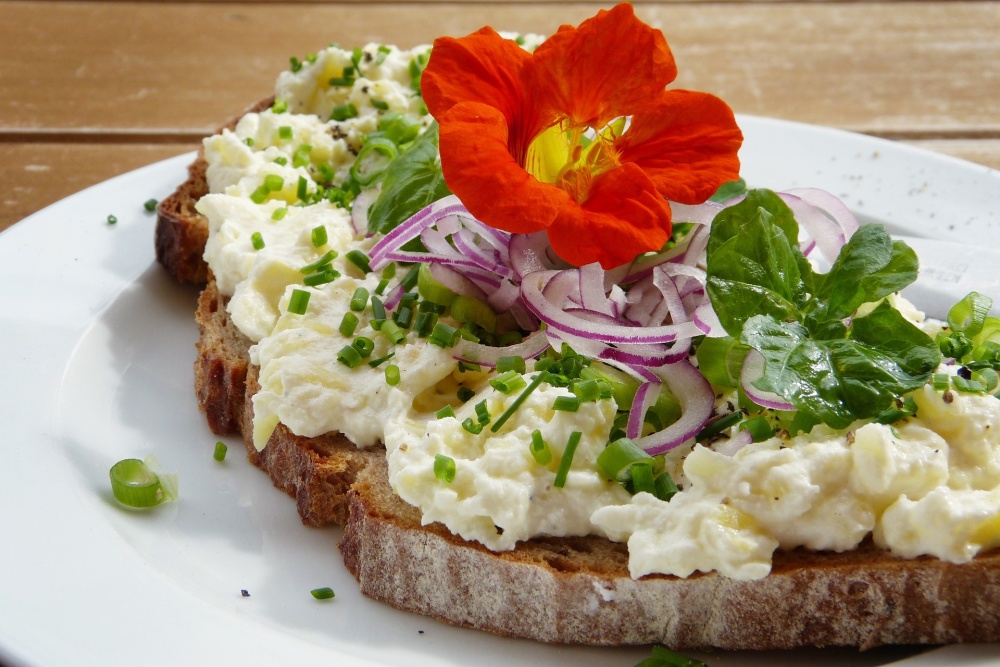
Climate
Grows naturally in humid, cool subtropical and tropical mid- to high-elevation climates, generally frost-free areas with annual lows of 7 to 18°C, annual highs of 15 to 27°C, annual rainfall of 700 to 3500 mm and a dry season of 5 months or less.
Nasturtium can also be cultivated with irrigation in much drier and warmer climates, though with markedly less success due to the plant's inability to cope with excessively hot and dry conditions.
Growing
New plants can be started from seed or cuttings. They perform best on moderately fertile, free-draining loam and sand soils of a slightly acid to slightly alkaline nature, generally with a pH of 6.0 to 7.5. Rich soils with high nitrogen levels encourage leaf growth, often at the expense of flowering.
Over-exposure to the hot afternoon sun can cause it to die back and become unsightly. For this reason, it is best grown in tropical lowland areas as an annual, in the cool months of the year and with shade from the afternoon sun. In cool, high elevation tropical areas, it grows well in full sun all year round.
Problem features
The fruit are buoyant and easily dispersed by moving water, which can carry them, and their seed afar. It is listed as a serious weed in at least one reference publication and is assessed as a high weed risk species for Hawaii by the Hawaii Pacific Weed Risk Assessment (HPWRA) project.
Where it grows
References
Books
-
Adams, C. D. 1972, Flowering plants of Jamaica, University of the West Indies, Mona, Greater Kingston
-
Editors of Sunset Magazine 2012, The New Western Garden Book: The Ultimate Gardening Guide, 9th edition, Sunset Publishing Corporation, California
-
Griffiths, M. & Burras, J. K. 1994, Manual of climbers and wall plants, Royal Horticultural Society (Great Britain), Timber Press, Portland, Oregon
-
Iremonger, S. 2002, A guide to plants in the Blue Mountains of Jamaica, University of the West Indies Press, Kingston, Jamaica
-
Jamieson, G. S. 1943, Vegetable fats and oils : their chemistry, production, and utilization for edible, medicinal and technical purposes, 2d ed, Reinhold, New York
-
Jex-Blake, A. J. 1957, Gardening in East Africa : a practical handbook, 4th ed., Royal Kenya Horticultural Society, Longmans, Green and Company, London
-
Macmillan, H. F. 1943, Tropical planting and gardening : with special reference to Ceylon, 5th ed, Macmillan Publishing, London
-
Martin, F. W & Ruberte, R. M. 1975, Edible leaves of the tropics, U.S. Agency for International Development (USAID), and the Agricultural Research Service, U.S. Department of Agriculture (USDA), Mayaguez, Puerto Rico
-
Randall, R. P. 2007, The introduced flora of Australia and its weed status, Cooperative Research Centre for Australian Weed Management, Glen Osmond, South Australia
-
Rubatzky, V. E. & Yamaguchi, M. 1997, World vegetables : principles, production, and nutritive values, 2nd ed., Chapman & Hall, New York
-
Weiss, E. A 2002, Spice crops, CABI Publishing, Wallingford, United Kingdom
-
Woodward, Penny 1997, Pest-repellent plants, Hyland House, South Melbourne
